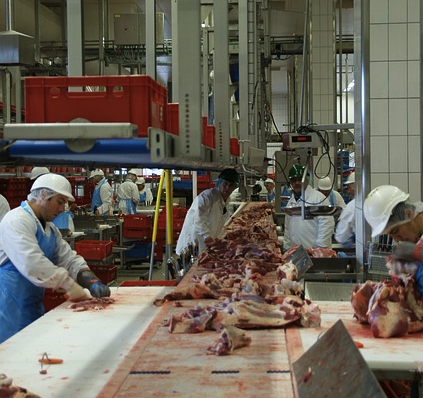The End is Nowhere in Sight
Posted on March 26, 2020

In just one, unwelcome week in America, the coronavirus drained $3.6 trillion from the stock market, clipped Apple shareholders for $220 billion, and sent millions of Americans to stores to buy every facemask, surgical glove, and gallon of bleach they could get their now-sanitized hands on.
It’s what we do; we panic first and ask questions later.
Well, it’s now later and questions are rolling in. The biggest, “What’s next?” has no clear answer but most national governments—including ours—have finally seen enough to act. Mostly.
In their first coordinated move, the world’s central bankers informally agreed to lower target interest rates to stave off what many forecast will be a one-half to one percent, virus-affected slowdown in the global economy.
The high side of that number, one percent, sounds tiny but it’s actually a $900 billion hit on the estimated $90 trillion world economy.
What’s $900 billion in terms of jobs?
It’s hard to calculate on a global scale but in 2017, Georgetown University estimated that a $1 trillion infrastructure-spending plan for the U.S. would create 11 million jobs. As such, it’s a safe bet that a $900 billion hit to worldwide growth would eliminate at least as many jobs.
More importantly, some market seers now claim the U.S. Federal Reserve will make another, and possibly even a third, interest rate cut in the coming (election) year to ensure U.S. companies remain well positioned for recovery.
If so, the Fed-weakened dollar is welcome news for U.S. ag exports. Cheaper dollars lead to more exports, right?
Usually, but this is not any usual time. In fact, forecasts Refinitiv, a financial data firm owned jointly by Blackstone and Thomson Reuters, deep U.S. interest rate cuts are just as likely to fuel “an all-out [international] currency battle” that will worsen today’s tariff-based trade wars as much as help them.
As Refinitiv sees it, few coronavirus-weakened nations can afford to concede crucial global markets to any competitor—including the American elephant—without weakening their already sickened domestic economies. That means they will fight U.S. rate cuts with cuts of their own and, just like that, the world’s economy staggers toward more problems.
It makes frightening sense. Let’s hope it makes frightening sense to the White House, too.
A more focused look at some key commodities proves the virus has already sickened global markets like crude oil. Since Jan. 1, crude futures prices have tumbled from near $65 a barrel to under $50 a barrel. Hard hit Chinese oil imports, estimated one-third lower since the coronavirus struck, are the key cause.
On March 3, traders lifted crude prices off lows when rumors circulated that OPEC oil barons would cut production to thin the oversupplied market. OPEC’s muscle, however, is overmatched as China’s newest export, coronavirus, has now hit oil importers like Japan, South Korea, and Italy.
The waves caused by China’s slow action on its epidemic are now also hitting U.S. farms and ranches.
DTN contributing analyst Elaine Kub noted in late February that the “shocking collapse of freight demand out of China, which accounts for 40% of global dry bulk seaborne shipments,” has dropped shipping costs so low that “you can hire a big ocean vessel”—with a two-million-bushel cargo capacity—for “around $500 per day,” or one-third its usual cost.
Kub additionally notes troubling signs of virus-slowed ag exports. U.S. Gulf ship loading in mid-February was only 80 percent of normal. Also, slow grain sales to the “top five U.S. corn customers have stunted rail movement not only to the ports, but also south across the border.”
U.S. meat exports are backing up too, reports the March 2 Wall Street Journal. Incredibly, nearly one billion pounds of frozen chicken, a 12 percent increase over normal, currently crowd U.S. warehouses. Frozen beef and pork are now stacking up, too.
All portend a long, slow recovery once the world and the U.S. truly stop the coronavirus’s still mysterious, steady march. That end, however, is nowhere in sight.
© 2020 ag comm
Share This